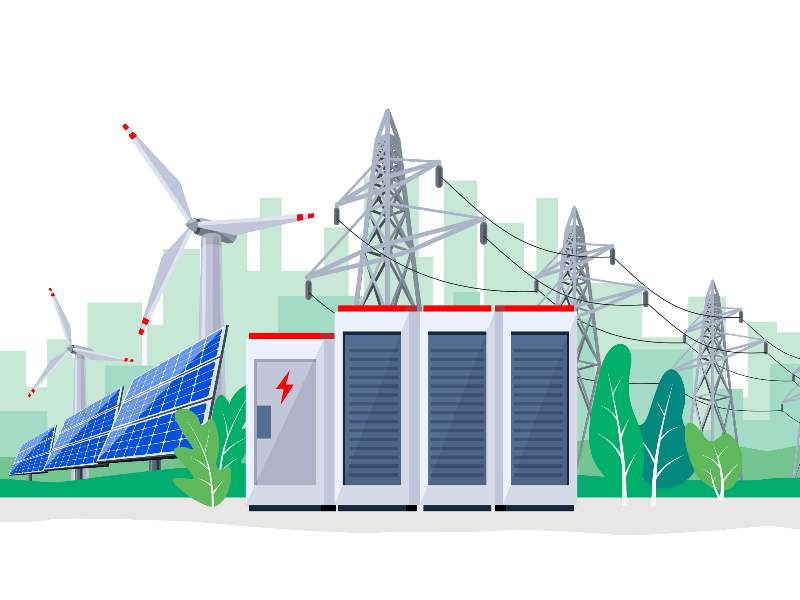An issue brief released by ESS Inc. details the critical need for long-duration energy storage (LDES) to create an efficient, low-carbon energy system and avoid the curtailment of renewable energy resources.
 Image: 123rf
Image: 123rf
ESS, manufacturer of long-duration iron flow batteries for commercial and utility-scale energy storage applications, released the brief in partnership with Citizens for Responsible Energy Solutions (CRES) Forum and the United States Energy Association (USEA).
Long-Duration Energy Storage: The Key to Making the Most of Zero-Carbon Electricity analyses curtailment data from US grid operators, illustrating the mismatch between renewable energy supply and grid demand.
“Wind and solar energy are fulfilling the promise of low-cost clean electricity whenever the sun shines or the wind blows,” stated Eric Dresselhuys, CEO of ESS. “As we move into the next chapter of the clean energy transition, it will be critical to accelerate the deployment of long-duration energy storage to build a reliable, resilient and affordable clean energy economy that delivers clean energy 24/7.”
Curtailment implications
In 2021, solar accounted for 17% of California’s utility-scale generation, with wind accounting for 8%. The state’s grid operator, California ISO (CAISO), curtailed approximately 1,400GWh of utility-scale solar and nearly 80GWh of wind in 2021, for a total of just over 1,500GWh – enough to power nearly 220,000 California homes for a year. In the first half of 2022 alone, the state curtailed nearly 2,000GWh of solar and nearly 90GWh of wind.
In August 2022, energy generation within CAISO emitted approximately 233mTCO2/GWh.
According to the brief, at that rate, if all 1,500GWh of curtailed solar and wind energy in 2021 had been stored for later use, over 350,000 metric tons (mTCO2) of carbon emissions could have been avoided. That is equivalent to the annual CO2 emissions of over 76,000 passenger vehicles.
“Energy storage bridges the gap when the wind isn’t blowing and the sun isn’t shining. The ability to cost-effectively store large amounts of electricity that can be discharged over long periods of time when needed will be critical to ensuring an increasingly cleaner electricity grid remains reliable and affordable,” added Heather Reams, CRES Forum president.
“CRES Forum’s issue brief highlights the critical need for long-duration energy storage (LDES) to maximise the use of renewable energy resources, enable carbon emissions reductions and ensure clean energy can power the grid more reliably.”
LDES options
According to the brief, there is a range of technological options for expanding long-duration storage capabilities. Most grid-scale storage resides in pumped hydropower, which currently accounts for 95% of utility-scale storage in the US.
Lithium-ion batteries have historically dominated new storage capabilities, but they currently cannot provide more than four hours of storage duration economically. They face the additional challenge of depending upon a supply chain dominated by foreign countries.
Support for next generation energy storage technologies will be crucial in harnessing the full potential of renewable generation.
Novel technologies were also found to offer significant promise for expanding storage duration.
Power-to-gas technologies such as hydrogen can store energy for weeks, or even months. Various LDES alternatives that do not require expensive minerals not readily available in the US have the added benefit of enhancing energy security.
Policy recommendations
Ultimately, the type of LDES most adequate for each region will depend on factors such as the share of renewable resources in the local energy mix, or the electricity load served.
Regions expected to witness a significant growth of standalone storage projects will likely include urban areas with high energy demand and likely higher revenues, yet are not suitable for renewable energy projects.
According to the brief, policy measures and voluntary practices in the marketplace that would help reduce uncertainty for investors and project developers include:
• Clear and precise regulatory definition of LDES as an asset class distinct from traditional short-duration storage technologies. This will help provide certainty to investors and project developers, as it will clarify what regulatory structures and incentive programmes apply to LDES technologies.
• Measures to drive investment in LDES technologies and reduce clean energy costs for consumers. Bolstering financial support for new technologies will aid the deployment of LDES systems and exploit their full potential to facilitate emissions reductions in the energy sector.
